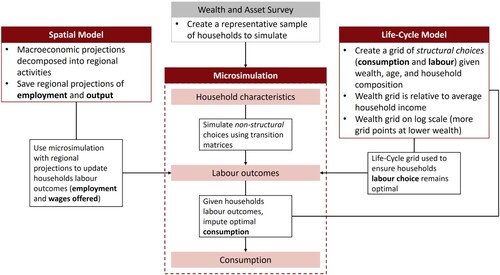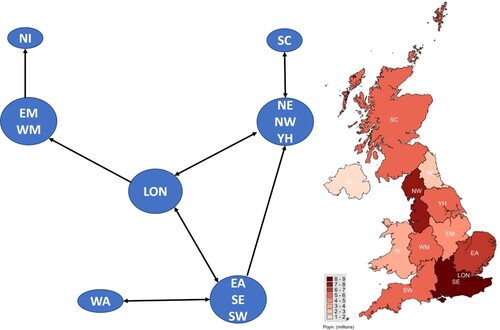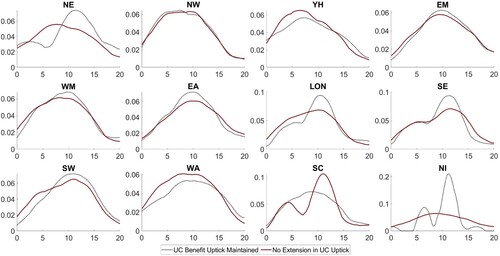Figures & data
Figure 1. Flowchart of methodology.

Figure 2. UK: GORs (ITL 1 regions) and estimated spatial structure.

Table 1. Utility function parameters.
Table 2. Microsimulation algorithm.
Figure 3. Wage dynamics.

Figure 4. Consumption densities for low asset households per region (consumption £’000s).

Figure 5. Labour choice histogram for low asset young adults per region (proportion of time compared to highest Labour hour).

